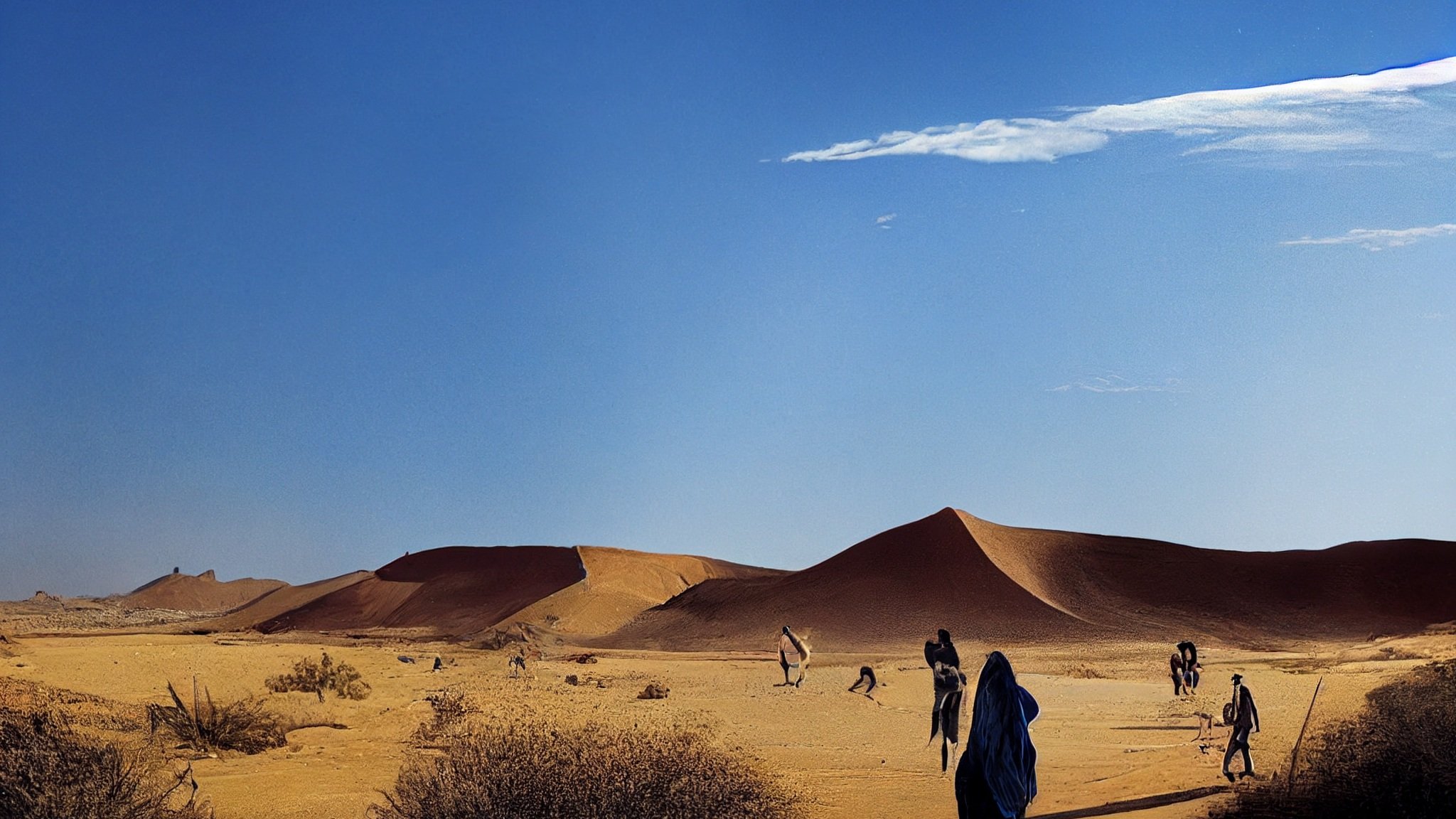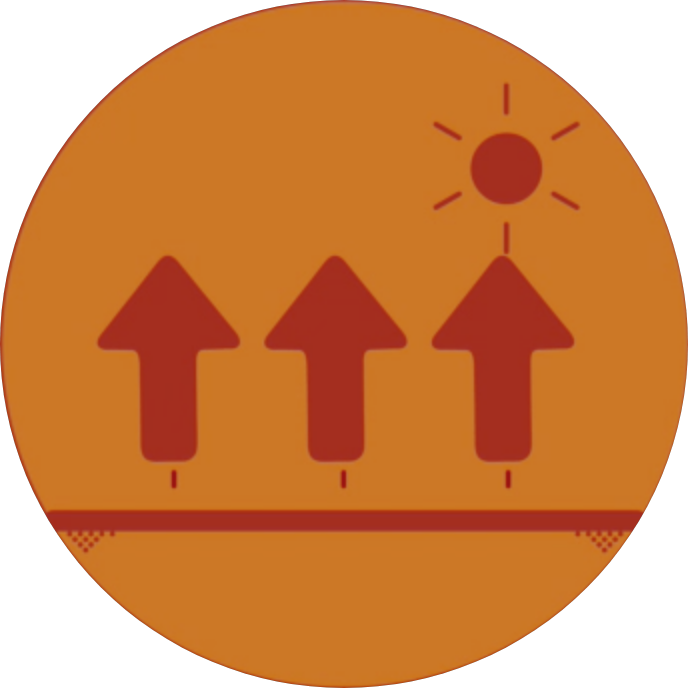
Minqin (The Oasis County) Migration
The youth is migrating out for higher education, but maybe it’s a mirage, a facade for something much bigger and fundamental here.
Read in: 8 mins
A Chinese Oasis county, ten times London’s size known for it’s resilient survival sandwiched between two deserts, is slowly dying of ageing population. The youth migrates out to compact cities, seeking higher education and employment. The county has access to electricity and modern devices yet lacks in transportation and delivery system links from outside. This project in particular allowed me to grow as an empathatic researcher and innovation designer, appreciating the diversity of people, language, and culture in an exploration to preserve a world beyond my knowledge.
Overview:
Team
Role
Timeline
Tools
4 Individuals
Team Lead
Researcher, Innovation Designer, Storyteller
3 weeks
Miro, UX mapping tools, Digital Ethnography, Zoom, Pen & Paper
To reduce or even reverse the mass youth migration taking place in Minqin county and bring the oasis back to it’s sustainable point.
Objective:
We chose this location as this was an interesting and ambitious problem, something many countries are or could be facing in one form or other in near future, and most of the team was familiar with this. This turned out to be a wicked problem, with multiple overlapping social, cultural, and geographical variables. As often is the case with wicked problems, there was no way of telling the correct solution from a range of solutions and the effect will take time to realize. But we still strongly implemented the Research, Analysis, Define, Ideation and Prototyping phases and tried to come up with the most wholistic idea.
Challenge:
Design Thinking
I led the team through design thinking process. Although an iterative process of 5 stages, due to narrow time constraints and the nature of the wicked problem, it was outside the scope of this project to prototype, implement or test the solutions. We followed the following stages of the design thinking process.
Research:
This research was inclined towards users and their environment. A huge part of research was conducted as desk research including journals and articles dating decades back about the geographical and social practices of the county. It soon became clear that the research would be incomplete without ethnography and cultural proble.Define:
We started defining the core problems using the “5 why analysis” approach. This helped us reach more fundamental problems which were hinted to during the research phase. During the defining phase we realised that this is turning out to be a “Wicked Problem”. We defined the problem into two set of requirements, one fundamental and the other being the long term outcome. Its Ambitious!Ideation:
Opening with “How might we?” to explore the problem statement. This was probably the most random, ambitious, inspiring and yet logical ideation session I have had the pleasure of being a part of. We explored ideas ranging from rebuilding the education system, redefining agricultural practices to concentrated solar power plant.Prototype:
A storyboard prototype was made in order to visualize and display how the proposed solution would take effect and the long term outcomes to expect from the same. I have included a model and a high resolution visual exploration of the same which was not included in the original study.
Research
We started with desk research and learning about the county. Most importantly an interview and a digital ethnography of one of our team member’s friends living in the county. This initially began with an informal conversation, then to a more structured approach of interviewing and digital ethnography where the participant sent us images of the location describing the daily livese of the people etc.
Defining with the “5 Why?”
Defining the problem here was not as simple due to the nature of the problem, often it would turn out to be leading to other factors as a wicked problem often has multiple overlapping variables. We managed to narrow down the main pain points and problems by going through the following process of 5 Why’s.
Secondary Research (online and literature)
Minqin spans a large area of more than 15,000 square kms, about 10 times the size of Greater London, with a population of 241, 400 and declining nearly at the rate of 23% per decade.
Triangularly shaped, with a reservoir at one end and a 10 meter wide irrigation canal running through the county for nearly 100 kms.
Most of the population of the county is situated along the length of the canal which is the only source of fresh water at the end of Shiyang river.
Wuwei, the nearest city to Minqin, is upstream the Shiyang river, where unethical industrial practices and overexploitation of river water has been recorded in official reports.
The oasis sits between two deserts and is solely reponsible for resisting them merging and encroaching more habitable land.
Many attempts have been made, some successful, by the government to stop dune encroachment throughout the decades.
Primary Research
Our participant was a student working as a local guide in the county for art festivals and niche tourism.
Transportation is considerably lacking, bus service introduced as recently as 2019.
No delivery system, even Amazon deliveries take weeks to reach the user’s nearby stations, reducing import rates.
Farming and food is the most important, considering the limited fertile land and arid environment.
Numerous primary and secondary education schools but only one university.
Young students move to other cities for higher education and return to the county as vacation gateaway.
Most of the youth settles in the city due to convinience of transportation and connection, and comfort of the weather.
The population of the oasis county is ageing and economy is slowing down.
The youth is migrating outside and not returning to settle in their adulthood.
WHY?
Minqin has become inconvenient to stay in last 20-30 years.
WHY?
Its the lack of basic resources, uncultivable land, transportation, delivery systems etc. not the education system on it’s own.
WHY?
Arid soil and dry climate with desert on both sides of the county. Scarcity of freshwater.
WHY?
Exploitation of river, high evaporation rates and sandstorms polluting remaining canal water.
WHY?
Problems we can focus on
Lack of connectivity with other cities with train or buses. Prevents people from returning due to complex journeys.
Open canal is subjected to pollution due to sandstroms. Also is subjected to high evaporation.
High evaporation rate due to lack of vegetation creates arid environment and encourages sand encroachment.
Delivery system is unreliable, requiring people to travel long distances in heat to gather essential articles.
Digital technology exists but is underutilised due to existing suboptimal physical systems.
Innovative Ideation
We started with a wide range of ideas (3 here), my contribution was to bring more plausible ideas and also evaluating and monitoring the ideation session. We focused our brainstorming session on the problems mentioned above.
“If at first the idea is not absurd, then there is no hope for it”
Idea #2 (by team member, additions from me)
Developing a transportation and delivery service system.
Idea #1 (by me, additions from team)
Rejuvinating fauna through drip irrigation techniques.
The What?
The idea is to grow strips of fauna (green strips) parallel to the canal in stages.
The first stage strip would be at the banks of the canal where it could hold most soil without much pressure on the canal itself. Consecutive stages may be added directing outwards from the canal towards the desert to counter desertification in long term.
The How?
This idea utilizes two essential elements:
The fact that the canal runs through the length of the whole county.
The county recieves heavy amounts of sunlight most time of the year.
Solar Panels or Solar trees can be installed on the bank of the river. This solar energy can be utilised for drip irrigation. Since drip irrigation requires substantially smaller amounts of water, the pumps can be considerably light and may very well run with solar energy.
The Limitations?
Although an interesting sustainable idea with workable mechanics and possibly big results in long term, this required a considerable amount of investment. This was not a sellable idea as it had no means of generating returns for the investors. This could only be pitched to government bodies.
The What?
To develop a service system of delivery and transportation links throughout the county with the use of EVs and smartphones.
The How?
Utilising the fact that Minqin sits only 300km away from a concentrated solar power plant, which is highly efficient as compared to it’s cousin, the PV cells. This energy can be used to power a system of transportation and delevery by electric vehicles, which could be manual or autonomous.
The powerplant is currently exceeding it’s output target and shows potential in this kind of green energy plants.
The Limitations?
This is something that can be monetised. However, it doesn’t help resolve the issues of harsh weather or desertification. The idea also does not directly help in conserving water as a scarce resource.
Idea #3 (by me, additions from team)
Developing a mini-train delivery system run by solar power.
The What?
Developing a delivery service system for Minqin, while attempting to minimize the desertification effects and possibly change the landscape in long term through conservation of water resource.
The How?
This idea utilizes the following elements for it’s working:
The canal runs through out the county, that could potentially behave as a highway if needed.
The county receives tremendous amount of sunlight due to it’s geographical location.
There is a grave requirement of minimizing evaporation of the water resources.
Further housing over the mini train system ensures:
Prevention from debris and evironmental elements during sandstorms and otherwise for the only source of water for Minqin.
Reduces evaporation rates by about 95%.
Installation site for PV Cells that can power this system through solar energy to certain degree.
Prevents sand granules from entering the mechanical parts of the mini-train system.
The idea is thus to build a mini-train delivery system on top of the canal which can run throughout the length of the county. This system could be used by courier and postal delivery systems, as well as internal local businesses to deliver goods, like Amazon.
Story Board
Users order on the delivery platform, which charges a small fee from the user for the service.
The packages are placed in the system by respective store owners or postal services.
The user tracks their package and is rest assured about their package delivery.
The sun happily radiates energy which is utilised to power the train system and minimize cost for the service.
The user is notified as soon as the package reaches the station nearest to them.
The user is delighted to recieve the package so near to them. They would use the service again to recieve packages without needing to travel long distances in extreme weather.
Based on the limited time and research we could conduct, we liked this idea and explored it further over how a business model can be build around this delivery service system.
Prototype:
Impact
Supply of cleaner water with reduced evaporation leading to more cultivation and food.
Growth in local businesses with increased connectivity.
Reduced migration rate due to increased employment opportunities within the county.
A healthy age profile of Minqin in 15-25 years.
Rise in the water table of the river basin in future years.
Reversing the effect of decreased cultivable land area at the rate of 4-5% per annum.
Reducing or even reversing the extreme environmental climate due to arid region and desertification in the coming decades.
Resisting the conglomeration of Tengger Desert and Badain Juran Desert and preventing further extreme climate change for the north-west China.
For Oasis
For People
Reflection
This project has been one of the most interesting projects of mine. It required me to push beyond my capabilities and comfort zone to research, understand and empathize of a world that is culturally and environmentally very contrasting to myself.
As a researcher, this was an interesting challenge due to phisical and linguistic inaccessibility, and forced me to drive beyond my boundaries.
I got in touch with my engineering self while fleshing out solutions, with the metrics and results to calculate how and what could work and what wouldn’t.
Like Wicked problems are, there’s no one fit solution. After recent considerations, I have realised there must be better ways to counter-act these mammoth forces of nature.
At the end of this project I emerged as a different person, someone who is more interested in creating honest and valuable impact in people’s life, for I realised that there is a whole world out there with painful problems that don’t even remotley revolve around me.
Thank You!
For staying up with me so far and being patient!




































